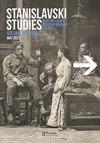The ever-widening contexts of Konstantin Stanislavsky
IF 0.1
0 THEATER
引用次数: 1
Abstract
ABSTRACT Adopting and adapting Giorgio Strehler’s notion of treating a great play as a series of nesting boxes, I intend to examine the contexts of Stanislavsky’s life and work as Matryoshka dolls, ever widening in significance. The first, most compact box is the biographical: the influence of family, education, theatrical experience, and cultural background on his artistic programme. It is set within the second: the historical, tracking his responses to the broader political and socio-economic events that bore in upon him. The third is the ideological: siting his ideas within the intellectual and aesthetic trends of his time. Finally, I hope to demonstrate how, become an institution in modern theatrical thought and practice, he has generated an all-encompassing context of his own.康斯坦丁·斯坦尼斯拉夫斯基不断扩大的背景
采用和改编乔治·斯特雷勒(Giorgio Strehler)将一部伟大的戏剧视为一系列套盒的概念,我打算研究斯坦尼斯拉夫斯基作为俄罗斯套娃的生活和工作背景,其意义日益扩大。第一个最紧凑的盒子是传记:家庭、教育、戏剧经历和文化背景对他的艺术计划的影响。故事发生在第二部分:历史部分,追踪他对影响他的更广泛的政治和社会经济事件的反应。第三是意识形态:将他的思想置于他那个时代的知识和美学潮流之中。最后,我希望展示他是如何在现代戏剧思想和实践中成为一个机构的,他自己创造了一个包罗万象的语境。
本文章由计算机程序翻译,如有差异,请以英文原文为准。
求助全文
约1分钟内获得全文
求助全文

 求助内容:
求助内容: 应助结果提醒方式:
应助结果提醒方式:


